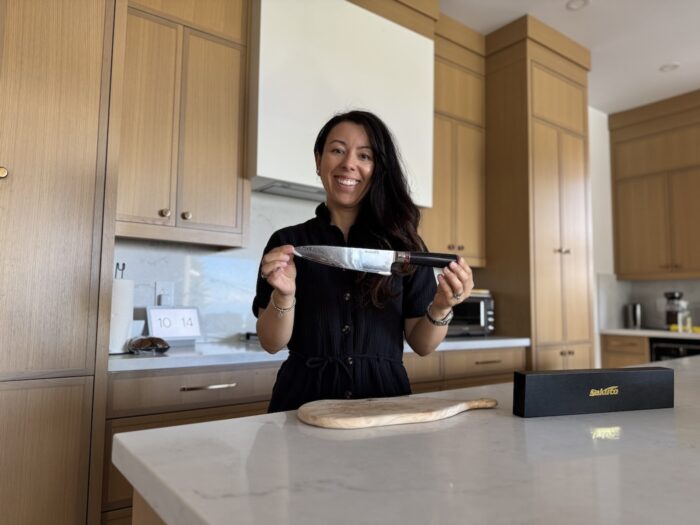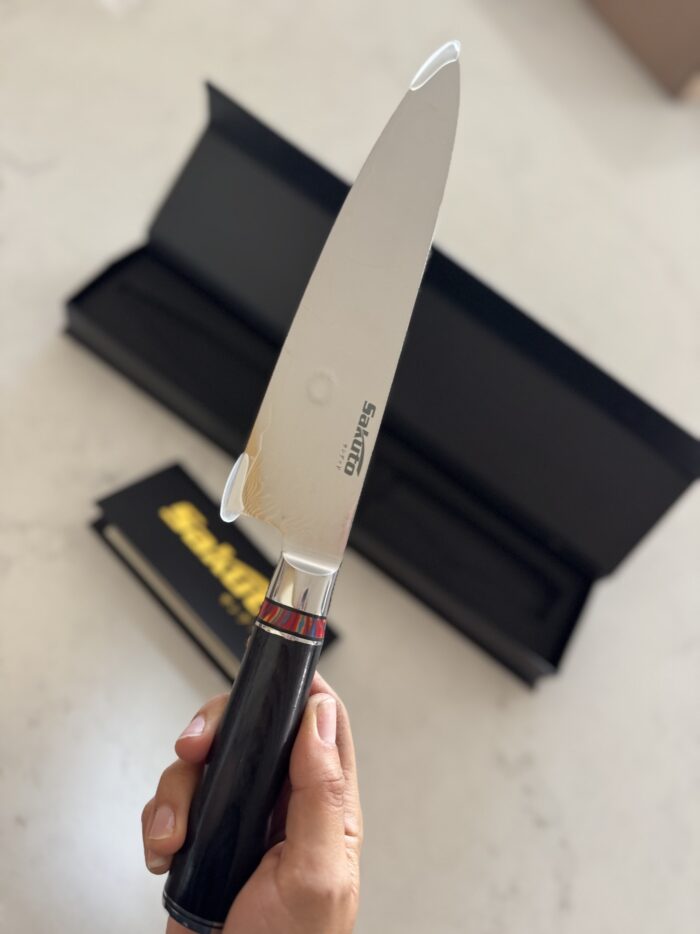One of the most essential items found in most kitchens is a sharp Kitchen Knife which makes the work easier when cutting, chopping, and slicing. Nevertheless, as much as we would like to always have sharp knives ready to use, knives are known to deteriorate in their sharpness with time, which is why proper knife sharpening has been ranked high as an important skill to know for anyone in the kitchen.
Luckily, there is a vast number of knife sharpeners available currently that enable you to fine-tune your cutting tools to the best possible standard, and every piece has its uses.

Kitchen knives are among the most used instruments when preparing food; therefore, they must be constantly sharp to allow easy cutting of all kinds of foods.
Multiple options are available depending on the material and operating principle, such as a whetstone, a belt sharpener, an oil stone and paste, a strop stone, and an electric sharpener.
Below, I share some useful guidelines that will help you choose the most efficient knife sharpener and restore your knife to its original pristine state.
Tools for Sharpening Kitchen Knives
Deciding what kind of tool is right for sharpening your kitchen knives requires considering the user’s proficiency level, the kind of knives possessed, and the relative frequency of honing.
Here’s a breakdown of which might be best for different needs:
Whetstones (Sharpening Stones)
- Best For: Those needing a slim blade and high precision will be happy to work with sharpening stones.
- Advantages: This is the most convenient type of sharpening. While other methods of sharpening are effective to a certain degree, one can easily have better control over the whole sharpening process using the above sharpening types. Some results showed that it can produce a very fine edge, which makes it ideal for high-quality knives. It is suitable for coarse and fine sharpening, as the wheel’s suitability depends on the type of sharpening required.
- Drawbacks: This is best utilized when skillful and requires practice.
- Best For: Convenient and easy to use.
- Advantages: I like that it is not difficult to use, and there is not much input needed from the user. It provides consistent results quickly. It sometimes contains one or more steps depending on the desired sharpening process.
- Drawbacks: It may be slightly more costly and may remove more material from the knife in the long run.
Manual Pull-Through Sharpeners
- Best For: Beginners or occasional users who would like to get a quick result without having to go master a technique.
- Advantages: Affordable and portable, simple and effective.
- Drawbacks: They are typically less sharp than whetstones and may not have as fine a tooth as could be desired.
- Best For: Tuner maintenance and maintaining knife sharpness in between sharpening sessions.
- Advantages: This is a great product, easy and fast to use. It maintains the edge as aligned as possible and, by doing that, increases the distance between two sharpenings.
- Drawbacks: Some do not sharpen and instead hone (alignment of the edge).
- Best For: Users who wish to have sharpness and accuracy in their kitchen knives but do not wish to take time and go through the process of learning how to use whetstones.
- Advantages: Provides consistent sharpening angles. The best scales strike a note of being accurate while still not overly complicated.
- Drawbacks: Depending on how much time is spent oiling the blade, it may take longer than electric sharpeners.

Overall Best Choice
Whetstones are usually unanimously regarded as the best choice for the highest-quality edge. They provide maximum control over the knife and can hone any variety of knives to perfection. There is a standard range of high-grade stones, such as Shapton, Naniwa, King, and so on, which are mostly used by most professional chefs.
Manual sharpening tools are generally more expensive than electric knife sharpeners, and they should be used when the time will allow for using the knife sharpener. Some of the most well-known and highly recommended brand names that some companies offer are Chef’s Choice and Work Sharp.
Only one Guided Sharpening Systems set is recommended for users who want to achieve a level of precision without difficulty. They give the predictable efficacy of electric sharpeners and enable refinement of manual sharpening, which is why most home chefs will find them suitable.
All of the above-mentioned tools can be used to sharpen your kitchen knives depending on the specific situation and preferences. For those who want that really exacting edge and are prepared to take the time to hone their skills, the whetstone is the number one choice – they really do give you the most precise cutting edge and are the sharpest. On the other hand, there is no greater advantage when using an electric knife sharpener than convenience and quick sharpening hence making it reliable for home electric knife sharpener usage.
At the same time, less complicated systems of guided sharpening provide highly acceptable results to home cooks, busy parents, and families in general. They also retain sharpening angles, appealing to those who want simple tools but do not want to give up high-level results.
Regardless of your choice, we highly recommend you find a proper stone sharpener to improve your cooking process by ensuring that all your knives stay sharp and safe to use in the kitchen.










5 Comments on “What is the Best Tool for Sharpening Kitchen Knives?”
Good to know, knives are easily the most used item in our kitchen!
Lots of great information here, thanks for doing all the research.
Nothing beats a sharp knife!
Great tips, thanks for sharing.
I rarely if ever sharpen our kitchen knives. I should probably start doing it.